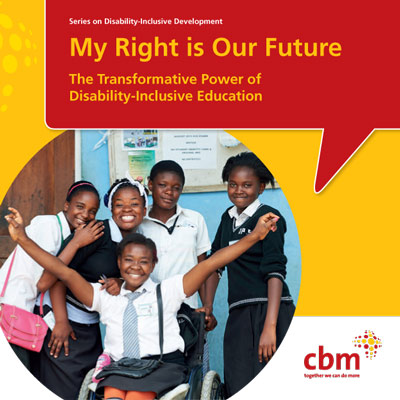Dear Minister,
29th May 2020
In more usual circumstances we would have hoped to have met directly with you, introduced ourselves and welcomed you to your role. We are aware that you have met some of the organisations below, but we are writing to you as the representatives of a range of charities and organisations that work with and support children with special needs and/or disabilities (SEND), and their families.
The COVID-19 pandemic affects us all, personally and professionally, but as you yourself have acknowledged, this period is particularly hard for children and young people with SEND, their families and those who support them. We are writing to you because of our particular concerns about the following issues:
Whilst the Coronavirus Act and accompanying DfE guidance relating to SEND were introduced with the aim of supporting local authorities to respond to the current crisis, we have significant concerns about the disproportionate impact on this group of children, who already experience poorer outcomes than their peers. In particular, we are concerned about the modification of Section 42 of the Children and Families Act and the variability in the interpretation of ‘reasonable endeavours’. Whilst we acknowledge and recognise the incredible efforts that many services and professionals have gone to in order to keep support going in many areas over the last few months, parents are reporting that some local authorities are making little or no attempt to engage with them to agree what provision in their child’s Education, Health and Care Plan will continue to be made and how and when this will happen. We are also concerned about reports regarding the number of therapeutic interventions not being provided, and the potential impact of this on children’s physical and mental health and wellbeing both now and in the longer term. Given that we expect an imminent announcement regarding the extension of the current
notice (which ends on May 31st), we would like to ask how your Department is monitoring these processes, what provision is being made; how the measures have affected children with SEND and what evidence will inform any subsequent decisions should there be any further extensions of the current notice.
In addition, we ask you to ensure that there is no further extension of the amended arrangements to vary timescales in The Special Educational Needs and Disability (Coronavirus) (Amendment) Regulations 2020, beyond the current end date of 25th September, as we are particularly concerned that those children and young people who are waiting for a plan to be issued or amended are not disadvantaged any further.
The issue of when/how children and young people will return to school/settings also remains problematic. We are concerned that although discussions are currently focusing on the search for a specific date, significant issues affecting children and young people with SEND are being overlooked:
- How children with SEND can be expected to return to school/settings without the support outlined in their EHC plans, or through SEN Support, which enables them to access learning
- What children and young people with SEND will need to supplement provision in an EHC plan, or on SEN support, during and after lockdown
- How preparations for transition into new educational settings and phases of education will be undertaken, with a focus on accessibility/reasonable adjustments, to restore a sense of belonging and welcome
- How to restore wellbeing during reintegration, to support a positive return to current schools/settings, and avoid the issues that can lead to disruptive behaviour and exclusions The plan for a return to school/settings needs to focus on promoting wellbeing, securing missing therapies and individual planning for all pupils with SEND. This approach needs to be applied consistently across the country. In many ways the restrictions faced within the current pandemic has simply magnified the pre-existing inequalities experienced by children and young people with SEND over many years. Over the past 6 months many of our organisations have met and fed into the government’s SEND Review, which set out to both examine the effectiveness of the current system, and provide changes and solutions to improve the efficiency, effectiveness and sustainability of this system. It is not clear where the SEND Review currently lies, but we feel strongly that it needs to come out of cold storage urgently and be adapted to fit the current extraordinary circumstances, and the ongoing legacy of these days – like so many other areas in our lives, it can no longer be ‘business as usual’. We would very much welcome the opportunity to
support the ongoing work of this Review, as we feel that nothing short of an overarching re-design of many aspects of the system is enough to address the gross inequalities in educational entitlement faced by many children and young people with SEND. The SEND Review and the Care Review urgently need to focus on the design of health and social care provision to support children, young people and their families in their local community.
We understand the above issues are not straightforward, and we would welcome any opportunities for ongoing dialogue with you and the department to help clarify and find solutions to the issues we have raised.
In addition, we are sure you will be interested in hearing about the findings of a recent survey run by the Disabled Children’s Partnership (DCP) – reaching out to families of children with SEND and asking for their views on how they have been affected, and what their ongoing concerns are. The findings will be shared with your officials this week and published next month. DCP would be interested in speaking to you in more detail about the findings.
Yours,
Amanda Batten, CEO, Contact
Professor Sonia Blandford, CEO, Achievement for All
Linda Lascelles, CEO, Afasic
Leo Sowerby, CEO, Affinity Trust
Rachel Travers, CEO, Amaze
Jolanta Lasota, CEO, Ambitious about Autism
Dr Deborah Kitson, CEO, Ann Craft Trust
Ben Higgins, CEO, Bild
Catherine McLeod MBE, CEO, Bingley’s Promise
Gareth Howells, CEO, Carers Trust
Dr Artemi Sakellariadis, Director, Centre for Studies on Inclusive Education
Helen Hewitt, CEO, Chailey Heritage Foundation
Dame Christine Lenehan, Director, Council for Disabled Children
Brett Parker, CEO, CPotential
Louise King, Director, CRAE
Patsy Hallmey, Director, Dorset Children’s Foundation
Carol Boys, CEO, Down’s Syndrome Association
Catherine Slater, Engagement Advisor, East Midlands and Yorkshire Activity Alliance Bob Reitemeier, CEO, I CAN
Enver Solomon, CEO, Just for Kids Law
Katie Ghose, CEO, KIDS
Edel Harris, CEO, Mencap
Graham Duncan, CEO, my AFK – working with disability Claire Dorer, CEO, NASS
Caroline Stephens, CEO, National Autistic Society
Clare Howard, CEO, Natspec
Steve Haines, Executive Director of Policy and Campaigns, NDCS
Paul Marshall, CEO, NDTi
Becky Jenner, CEO, Rett UK
Matt Stringer, CEO, RNIB
James Taylor, Executive Director of Strategy, Impact and Social Change, Scope
Jane Gates OBE, CEO, Sebastian’s Action Trust
Gillian Docherty, Co-Founder, SEND Community Alliance
Nasreen Hussain, Head of Service, SENDIASS Birmingham – representing Information Advice & Support Services
Richard Kramer, CEO, Sense
Dr Shirley Landrock-White, Chair, SMiRA
Tania Tirraoro, CEO, Special Needs Jungle Ltd
Liz Ryburn, Support Services Manager, Spinal Muscular Atrophy UK
Laura Lewis, Charity Director, Swings & Smiles
Dalton Leong, CEO, The Children’s Trust
Mrunal Sisodia and Tina Emery, Co-Chairs, The National Network of Parent Carer Forums
Mark Lee, CEO, The Together Trust
Charles Colquhoun, CEO, Thomas Pocklington Trust
Richard Rieser, CEO, World of Inclusion Ltd
Mark Devlin, CEO, Young Epilepsy
Category: News, Uncategorized


